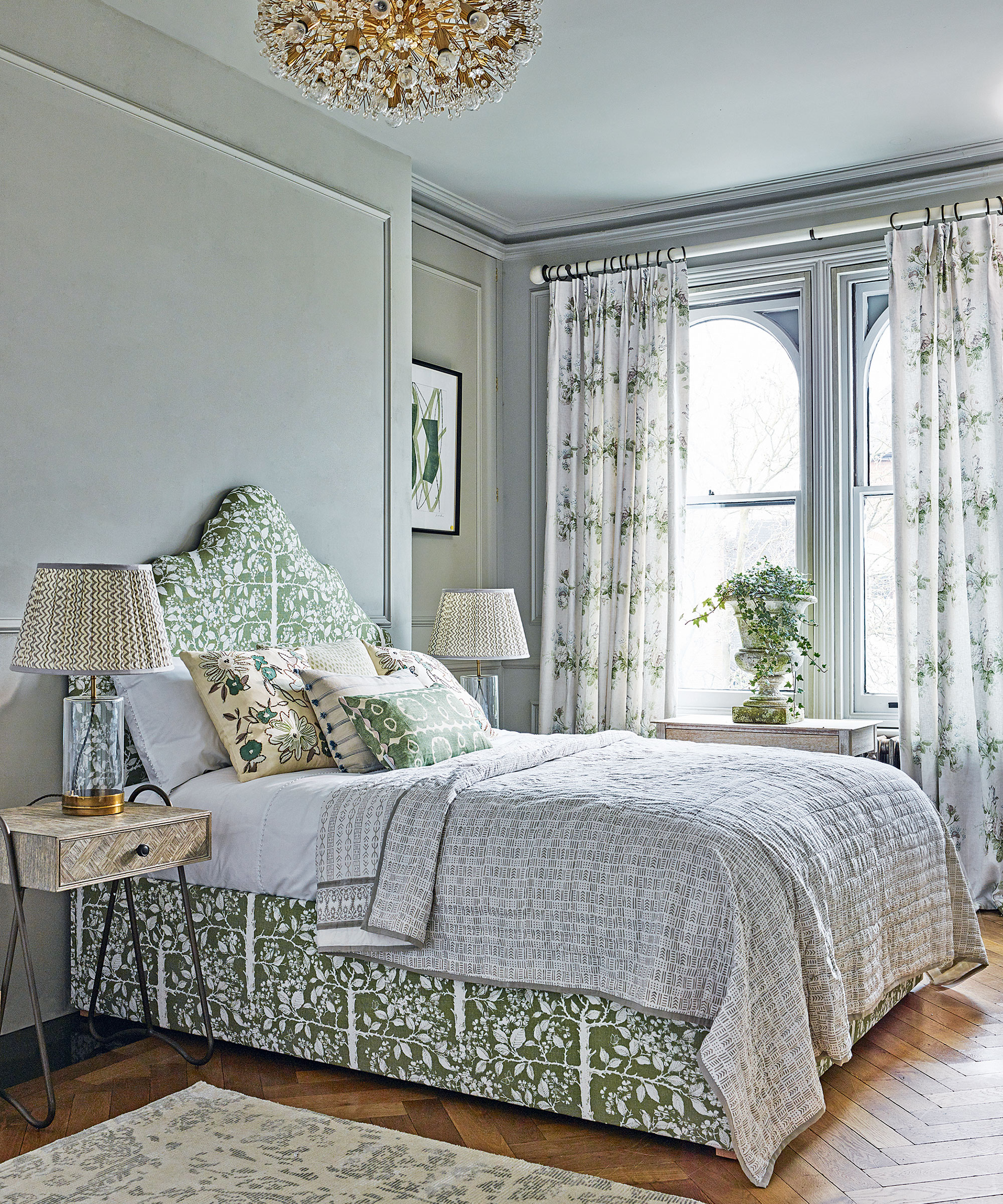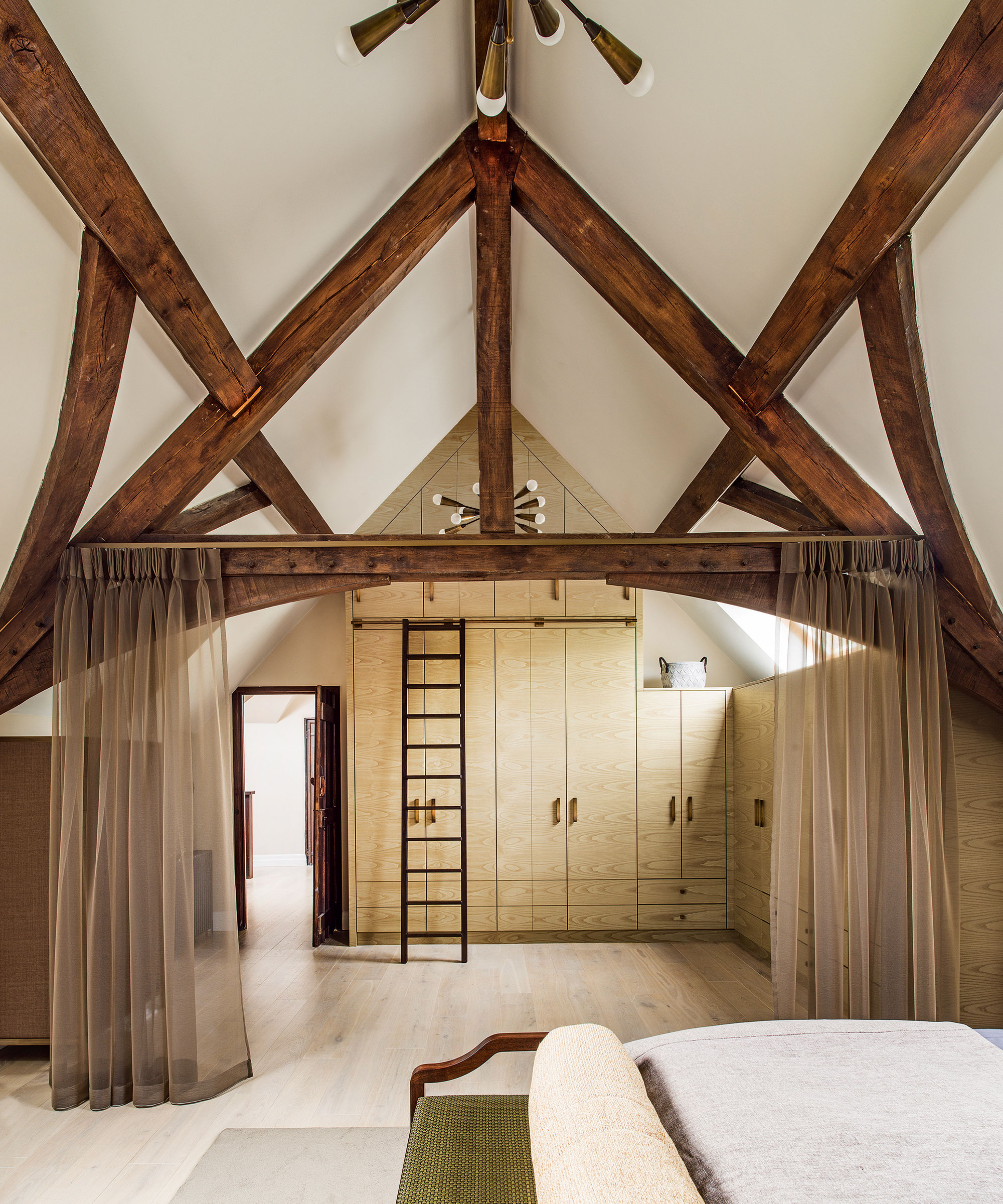Good Feng Shui bed placement – 5 rules for the most important piece of furniture in your home
The bed is the most important piece of furniture in your home, so get the placement just right with our expert advice


Your Feng Shui bed placement is vital to creating a bedroom with 'good' energy, in fact, the placement of your bed, especially in a place with a limited square footage is essential to how you interact with the space.
Learning how to position your bed using Feng Shui is believed to improve mood, health and wellness, as well as help you to avoid the Feng Shui death position. Insufficient rest can cause our body to produce increased levels of the stress hormone cortisol, so getting a good night's sleep with the right bed placement can improve your ability to rationalize worries and boost your mental health.
Feng Shui bed placement – how to correct 'bad' placement
More than any other space in the home, your bedroom is the one place where you want to feel completely relaxed, comfortable and rested. With fewer practical constraints than other areas of the house, once you’ve covered the basics of bedroom Feng Shui – deciding on the the best bed ideas is the easy part.
But remember, if you are somewhere with 'bad' Feng Shui bed placement, don’t worry. There’s always something you can do to adjust your current bedroom layout – and work with what you already have.
1. Place the bed in a commanding position

When planning a Feng Shui bedroom layout that adheres to the principles of Feng Shui, the most crucial decision to make is where to position the bed – being the largest piece of furniture in the room it will have a big impact on how the space functions, looks and feels. Also, representing your health and wellbeing, the bed is without a doubt the most important piece of furniture in your entire home.
The best location for your bed is in commanding position. This means that, when in bed, you’re facing the door while not directly in line with the door. You also don’t want any doors to open up directly in line with the bed. If this is something you cannot achieve in your space, you might be able to use bedroom mirror Feng Shui to see the door from your bed.
It is also recommended that you keep the bed away from a bathroom wall. If this layout isn't possible due to size constraints, you can place a mirror on the wall above or behind the bed to expand the view of the bedroom beyond. This will erase the 'bad' or negative energy from the bathroom.
Design expertise in your inbox – from inspiring decorating ideas and beautiful celebrity homes to practical gardening advice and shopping round-ups.
When it comes to choosing the right bed, ideally, you want to have a bed that is full sized or larger. For a main bedroom, it’s best to avoid a single bed or twin bed – unless you are single – and would like to remain so.
You should also aim to avoid placing your bed underneath an overhead light as this can have a negative effect when you are trying to create a Feng Shui bedroom for good luck.
However, a single bed might be a good fit if you are prioritizing yourself. If you are in a partnership or if you would like to be, do your best to get a bed that can accommodate another person.
2. Avoid the 'coffin' position

According to Feng Shui philosophy, you want to avoid the dreaded 'coffin position' where your feet point towards the door. This position, also know as 'dead man's position' is said to disrupt sleep and cause tension and unease.
However, if you have awkwardly-shaped or a small bedroom, you may not be able to relocate the bed entirely. Instead, consider the use of a bedroom mirror to 'visually reposition' the bed.
Locate the mirror above or behind the bed so that you can view the reflection of the door from your bed. This is believed to help disperse any incoming negativity, conflict or bad energy to allow for a more restful sleep.
3. Make sure your headboard is up against a solid wall

Headboard ideas can totally transform a bedroom – but there's much more to them than simply placing a padded board behind your bed's head. In Feng Shui the headboard represents stability, support and security in your life, and especially in your romantic relationships.
The best Feng Shui headboard ideas are solid, without any perforations. The idea behind this theory is that a solid wall will provide you with the necessary stability to face life head on.
'Headboards are vital for aesthetic reasons, too,' says Kit Kemp, interior designer and founder of Firmdale Hotels. 'They provide a focal point, can introduce color, pattern and texture, and can help to correct and improve a room's proportions and visual impact.'
Secondly, avoid placing a bed in front of a window. This is particularly important if you’re on the ground floor or suffer with any known eye issues.
4. Leave space on both sides of the bed

If you share a bed with a partner, then it is best to have enough 'open' space on the left and right sides of the bed. Most Feng Shui practitioners recommend between 15-20 inches on each side. The space on both sides allows a positive balance of your yin and yang, as well as space for each person.
But why does Feng Shui suggest that you should avoid placing your bed up against a wall? This is because this layout can cause your chi (also known as qi) to rush in too quickly and settle on and around your bed. You'll want to avoid anything too stimulating into the bedroom.
Symmetry is another interior design trick loved by Feng Shui masters – and it's perfect for the bedroom. In Feng Shui, pairs are thought to promote harmonious energy, so kit your bedroom for two people, even if you're not currently in a romantic relationship.
'Frame the bed with a bedside table on each side of it to create a mirror image on each side of the axis,' says Liv Wallers from British design studio, Yellow London. 'The room should be centred symmetrically around the bed with an equal distribution of objects and furniture around it.'
However, if your bedroom is on the small side, and you have no option but to place your bed up against wall, you can also can also hang a mirror on the wall that the bed is up next to. This will expand the space visually, and redirect the energy within your room.
5. Avoid placing a bed in rooms with beams or sloped ceilings

For the best Feng Shui bed placement, you want the area above your bed to be free of beams or soffits. Ceiling ideas that are sloped or slanted are best avoided too. These architectural Feng Shui house features to avoid are said to create unnecessary pressure, strain and stress.
If it’s unavoidable, then utilize creative room divider ideas to separate the space or conceal the ceiling where possible. Room dividers allow you to create a wide range of clever and inspiring ways to make your bedroom work for you. Think: screens, partitions, and even the intelligent use of color.
A large bedroom can be 'zoned' off with drapes or sheer curtains hung to divide the space. They needn't be pulled right across a room to utterly divide it, but they can create a beautiful pause, adding color, texture or dimension.
It is also possible to paint the beams or soffits in the same color as the ceiling to help disguise this disruptive architectural feature, making it feel less oppressive.

Jennifer is the Digital Editor at Homes & Gardens, bringing years of interiors experience across the US and UK. She has worked with leading publications, blending expertise in PR, marketing, social media, commercial strategy, and e-commerce. Jennifer has covered every corner of the home – curating projects from top interior designers, sourcing celebrity properties, reviewing appliances, and delivering timely news. Now, she channels her digital skills into shaping the world’s leading interiors website.